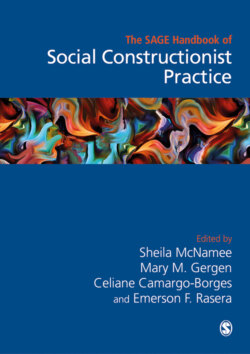Читать книгу The Sage Handbook of Social Constructionist Practice - Группа авторов - Страница 74
На сайте Литреса книга снята с продажи.
Conclusion
ОглавлениеI have offered a case as an illustration of the practice of ART. Journals – which channel the work of scholars – help to give voice to, and therefore fashion, the mindset of the educated class that produces – either as reproduction or transformation – the world we have. ART is a process for self-transforming as a scholar, with stakeholders, in the creative work of co-producing a more sustainable world.
To be transformative – that is to bring social constructionism to pragmatism with a larger ecological intention, ART comprises:
Clarifying purpose
Reflexivity and agency
Commitment to developmental process
Inquiry in practice with others
Integrating first, second and third
And don't forget, enjoying ourselves too!
How then might we muddle forward, learning together?
For our transformative inherent potential as a learning species to be realized, a new intention for knowledge creation is key. Like Othello who bemoaned mere ‘prattle without practice’, we can intend for ourselves, new systems of learning – beyond prattle – which can practice as part of a solutions orientation to future forming.
To paraphrase the relational sentiment of Margaret Mead: never doubt that a small group of thoughtful, constructionist action-oriented transformations researchers can help change the world. Isn't it time that more scholars learned to engage fellow citizens in inquiry/practice around desired futures?
It helps to remember the wisdom of philosopher/poet David Whyte who reminds us that our ‘great mistake is to act the drama as if you were alone’. We are not alone. We construct the world in relationship. This is the promise of the constructivist spirit of action research for transformations.
